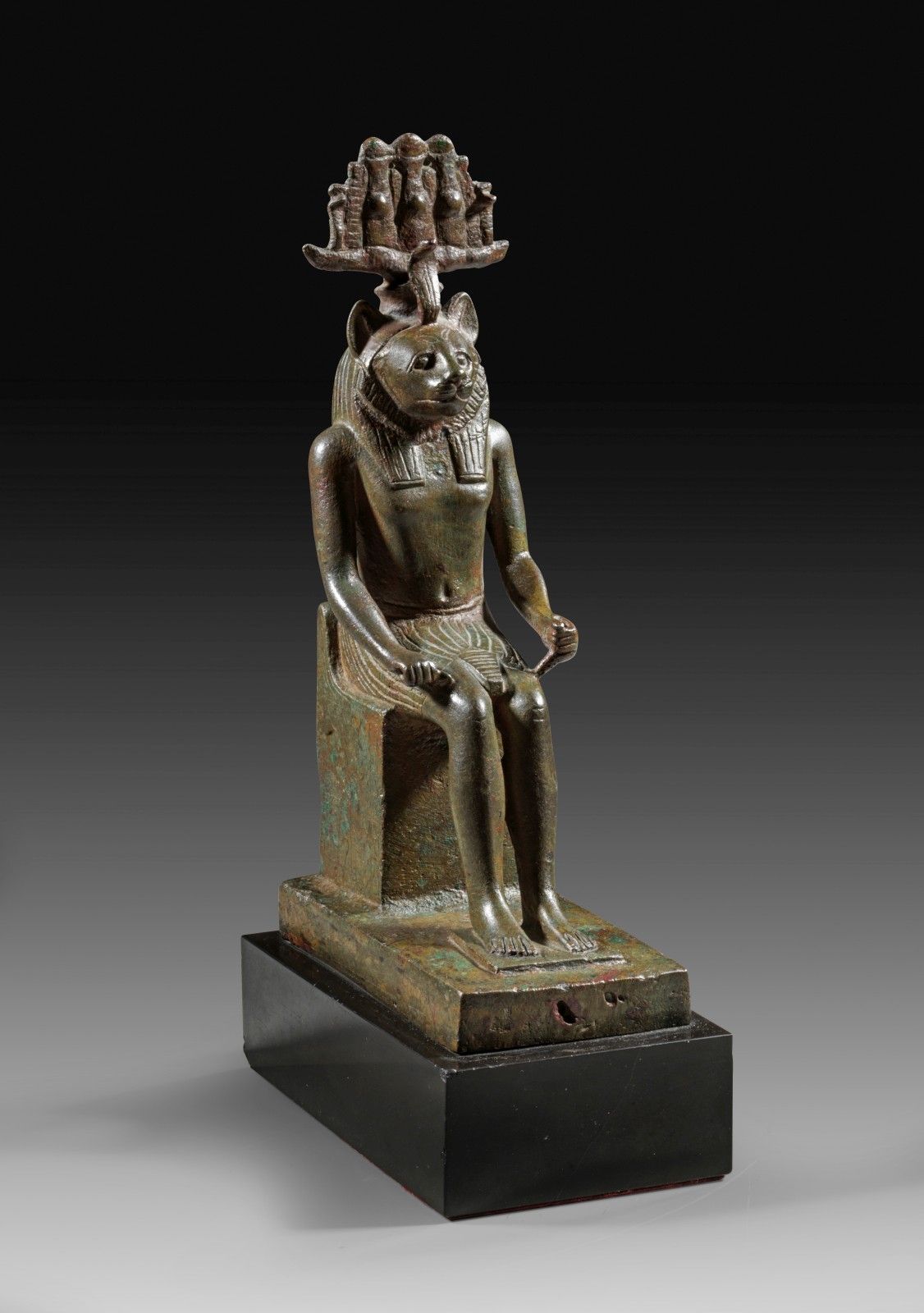Description
Large bronze figure of Horus of Pe. Late period, 25th - 26th dynasty, ca. 8th - 4th century B.C. Bronze, h 22,5cm. On a rectangular plinth sits a human male figure with a lion's head on a throne with a slightly raised backrest. He wears only a short skirt. A wig covers the mane and the shoulders, on the head sits an expansive HemHem crown. This consists of a calathos, from which two horizontal ram's horns grow. On top of the ram's horns is a special form of the Atef crown, the centerpiece of which is tripled and framed by two uraeus serpents. In front of the kalathos another erecting uraeus serpent. The hands, one held horizontally, one vertically, formerly bore attributes. The sides of the throne are adorned with various motifs in incised technique, including the Sema Tawy symbol representing the union of Upper and Lower Egypt. Beautiful green and reddish brown patina, intact. Provenance: from Swiss private collection, Zurich, collected in the 1930s. Most lion-headed deity images of Egypt depict female deities, such as Sakhmet or Wadjet. Lion-headed men, on the other hand, are the exceptions. Some pieces were compiled by Jacques Vandier in 1967 and proved that they are - at least partly - a representation of Horus from Pe (Bouto). (see below). Roeder mentions a specimen with a prayer to Horus, the son of Wadjet. Lit:: Jacques Vandier, Quadjet et l'Horus léontocéphale de Bouto , Monuments et Memoires, Fondation Eugène Piot (1967), Vol. 255, 17-21. Cf. also Harvard Art Museum https://hvrd.art/o/304008. ● Ware in vorübergehende Verwendung / Subject to temporary admission
205
Large bronze figure of Horus of Pe. Late period, 25th - 26th dynasty, ca. 8th - 4th century B.C. Bronze, h 22,5cm. On a rectangular plinth sits a human male figure with a lion's head on a throne with a slightly raised backrest. He wears only a short skirt. A wig covers the mane and the shoulders, on the head sits an expansive HemHem crown. This consists of a calathos, from which two horizontal ram's horns grow. On top of the ram's horns is a special form of the Atef crown, the centerpiece of which is tripled and framed by two uraeus serpents. In front of the kalathos another erecting uraeus serpent. The hands, one held horizontally, one vertically, formerly bore attributes. The sides of the throne are adorned with various motifs in incised technique, including the Sema Tawy symbol representing the union of Upper and Lower Egypt. Beautiful green and reddish brown patina, intact. Provenance: from Swiss private collection, Zurich, collected in the 1930s. Most lion-headed deity images of Egypt depict female deities, such as Sakhmet or Wadjet. Lion-headed men, on the other hand, are the exceptions. Some pieces were compiled by Jacques Vandier in 1967 and proved that they are - at least partly - a representation of Horus from Pe (Bouto). (see below). Roeder mentions a specimen with a prayer to Horus, the son of Wadjet. Lit:: Jacques Vandier, Quadjet et l'Horus léontocéphale de Bouto , Monuments et Memoires, Fondation Eugène Piot (1967), Vol. 255, 17-21. Cf. also Harvard Art Museum https://hvrd.art/o/304008. ● Ware in vorübergehende Verwendung / Subject to temporary admission
